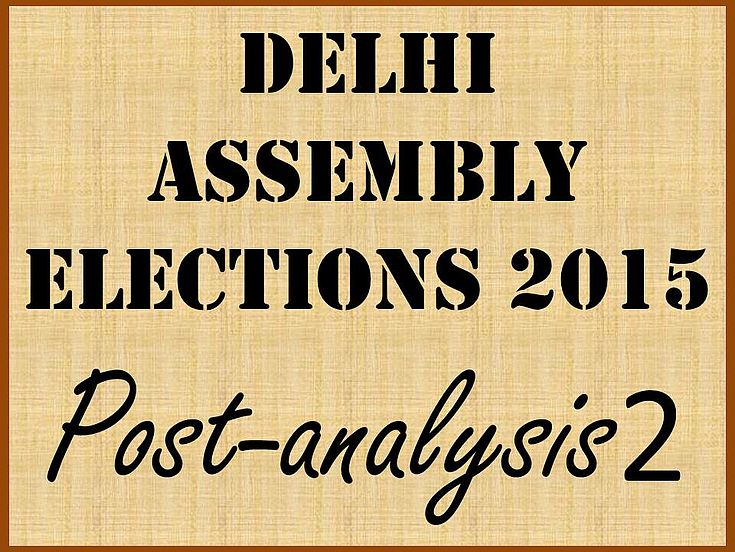News
2015 Delhi Assembly Elections Verdict: An Analysis
Before this, in 1989 Sikkim Assembly elections, Sikkim Sangram Parishad (SSP) won 100% of the seats (all 32 seats); in 2004, Sikkim Democratic Front (SDF) won almost 97 percent of the seats (31 out of 32 seats) in Sikkim Assembly elections and in the 2009 Sikkim Assembly elections SDF won 100% of the seats (all the 32 seats). Therefore, in terms of seats, this is fourth largest victory in the history of Assembly elections in India. In terms of vote share, AAP got nearly 54% of votes polled in this Assembly election. There are only 37 cases in the history of State Assembly elections in India where the winner has got over 50% of the vote share and AAP stands on the 13th position in the list. In fact, it would be interesting to highlight here that since the first Lok Sabha elections (1951-52) in India, no national parties have ever been able to gain even 50% of the votes polled (the highest ever was 49.1% in 1986). In the First-Past-The-Post electoral system, which is in operation in India, what matters is not the vote share but number of the seats won to prove the majority in the Assembly.
Mr Kejriwal was sworn in on 14 February 2015, exactly after one year since he had resigned from the office of the Delhi’s Chief Minister (CM) on 14 February 2014, after being in power for about 49 days. In between, he and his party also fought Lok Sabha elections in April-May 2014 but lost miserably by losing deposits on about 400 seats and just won in four Parliamentary Constituencies (PCs) in Punjab. It is in this context that the spectacular victory is seen as sudden resurrection of the party, which could emerge an alternative to the mainstream political parties in the upcoming Assembly and next Lok Sabha elections.
AAP in 2013 Vs AAP in 2015
AAP performed spectacularly well in 2015 as compared to 2013 Delhi Assembly elections, in terms of both absolute votes and number of seats.
AAP’s absolute votes got increased by 25,56,797 from 23,22,330 in 2013 to 48,79,127 in 2015. Increase in its vote share was about 25 per cent.
Now the question is: From where did AAP get this about 25 lakh votes? Elections resemble zero-sum games: one’s loss, other’s gain. However, in the Assembly elections, there were many candidates in fray, not just two. Therefore, it is very difficult to tell which party’s vote bank switched to which party. It is assumed that mass exodus of the voters from one party goes in favour of another party en masse. Also, it is still a viable hypothesis that the loyal voters do not change their loyalty ‘overnight’. As BJP got increased its absolute votes by about 3 lakhs, there is no reason to believe that there was mass exodus of voters from BJP to some other party. Therefore, it seems AAP benefited from the addition voting, mass exodus of voters from Indian National Congress (INC) and Bahujan Samaj Party (BSP), and from other small and regional parties/independents.
The detailed report for download: 2015 Delhi Assembly Elections Verdict: An Analysis

